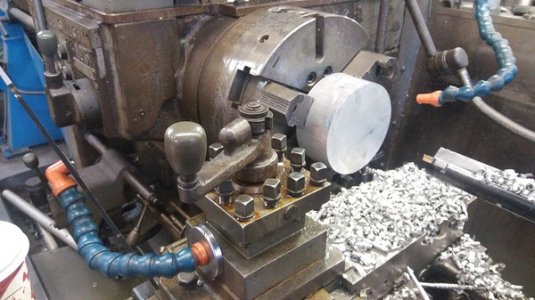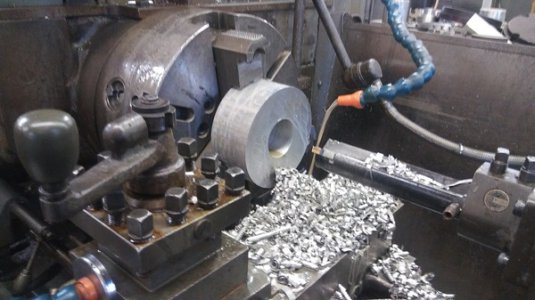-
Welcome back Guest! Did you know you can mentor other members here at H-M? If not, please check out our Relaunch of Hobby Machinist Mentoring Program!
You are using an out of date browser. It may not display this or other websites correctly.
You should upgrade or use an alternative browser.
You should upgrade or use an alternative browser.
Machining Coolant or Cutting Fluid?
- Thread starter ACHiPo
- Start date
- Joined
- Nov 17, 2017
- Messages
- 1,525
Why do CNCs seem to hose down parts with cutting fluid (especially when they are fully enclosed)? Is it just because CNCs typically hog out material at a higher rate?
CNC machine spray down the part under machine to remove chips (surface finish), cool the tools (life), cool the part (dimensional stability).
Why do CNCs seem to hose down parts with cutting fluid (especially when they are fully enclosed)? Is it just because CNCs typically hog out material at a higher rate?
Yes. CNC machines are generally more productive to make the extra investment over manual machines worthwhile. So more heat, more chips and expensive tools have to be managed.
Last edited:
- Joined
- Feb 2, 2017
- Messages
- 1,234
Thanks. Where would I find out maximum dry speeds/feeds/depths without flood or mist coolant?Yes. CNC machines are generally more productive to make the extra investment over manual machines worthwhile. So more heat, chips and expensive tools have to be managed.
4
4GSR
Forum Guest
Register Today
Take the existing numbers and cut in half or if you feel that is too much, drop the numbers by about 33%, then work up from that for dry turning.Thanks. Where would I find out maximum dry speeds/feeds/depths without flood or mist coolant?
- Joined
- Feb 2, 2017
- Messages
- 1,234
Thanks!Take the existing numbers and cut in half or if you feel that is too much, drop the numbers by about 33%, then work up from that for dry turning.
For dry machining you have to read the chips to get the right settings as explained in the video on chips feeds and speeds from this source
http://www.thatlazymachinist.com/free-training.html
http://www.thatlazymachinist.com/free-training.html
- Joined
- Sep 29, 2014
- Messages
- 2,102
Because you can with an enclosed machine. There are few operations that will not benefit from flood coolant.Why do CNCs seem to hose down parts with cutting fluid (especially when they are fully enclosed)? Is it just because CNCs typically hog out material at a higher rate?
Also enough coolant will blow the chips out, there is nothing more damaging to mill tooling then recutting the chips.
As a simple example I did this on Saturday, if done without coolant the material would glue itself to the tool causing all manner of problems.

7" diameter aluminum saw cut rounds that finish with a 3" bore 3 1/4 inches long. I chose a 2 11/6" spade drill and had at it, without coolant I would have been doomed. 1 minute 45 seconds per hole in 25 parts.
Flood coolant is your friend. Do not try this at home, that is a 30 HP spindle machine.
I can not overstate the usefulness of flood coolant

Last edited:
- Joined
- Feb 2, 2017
- Messages
- 1,234
Wreck,Because you can with an enclosed machine. There are few operations that will not benefit from flood coolant.
Also enough coolant will blow the chips out, there is nothing more damaging to mill tooling then recutting the chips.
As an simple example I did this on Saturday, if done without coolant the material would glue itself to the tool causing all manner of problems.
View attachment 247925
7" diameter aluminum saw cut rounds that finish with a 3" bore 3 1/4 inches long. I chose a 2 11/6" spade drill and had at it, without coolant I would have been doomed. 1 minute 45 seconds per hole in 25 parts.
Flood coolant is your friend. Do not try this at home, that is a 30 HP spindle machine.
I can not overstate the usefulness of flood coolant
View attachment 247926
Pretty compelling case. I was questioning "spade bit", then I looked closer--by golly you've got a hardware store spade bit clamped in some sort of boring bar. I don't doubt the efficacy, I just don't want to deal with the mess. Mebbe I'll get over it, but spraying white oily stuff everywhere (well, you only spray it one place but it ends up everywhere) and then separating the chips seems, em, messy.
Evan

